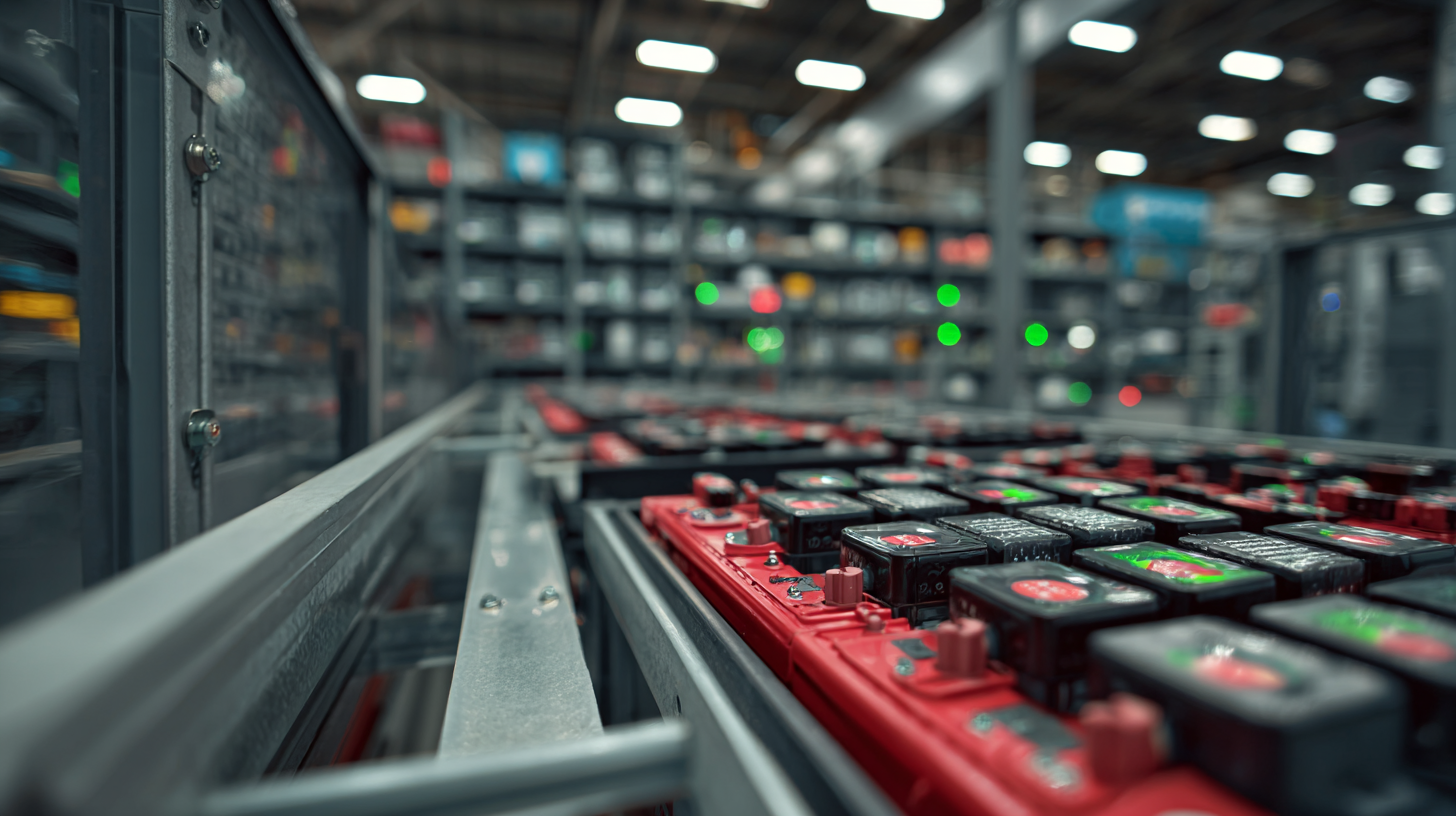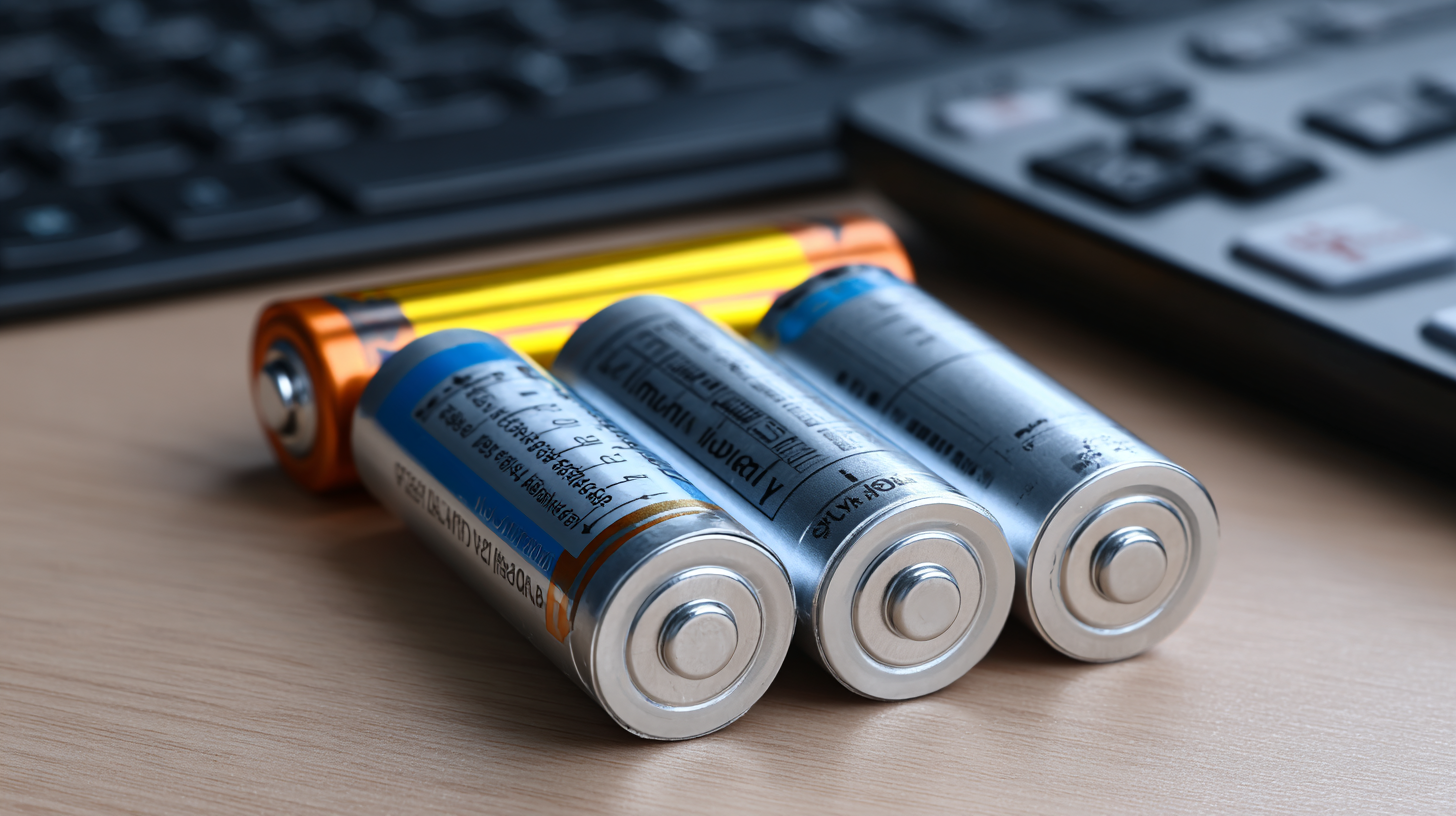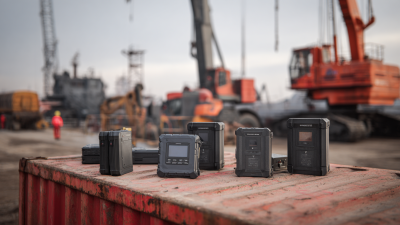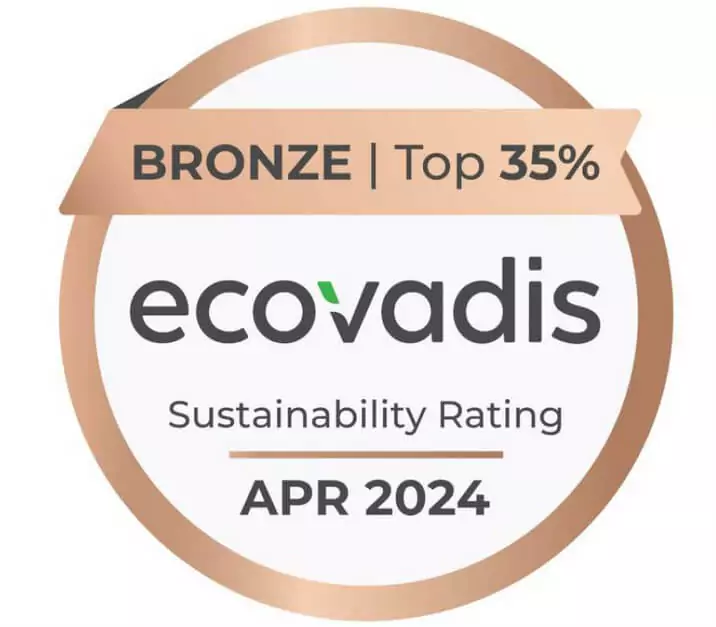How to Maximize Efficiency with Industrial Lithium Batteries
 In today's fast-paced industrial landscape, the demand for efficient and reliable energy solutions has reached unprecedented levels. Industrial lithium batteries stand at the forefront of this revolution, offering remarkable advantages over traditional energy sources.
According to a report by the International Energy Agency, the global lithium-ion battery market is projected to grow at a CAGR of 20% from 2021 to 2027, driven largely by advancements in energy density and longevity. The implementation of industrial lithium batteries can significantly enhance operational efficiency, reduce downtime, and lower overall energy costs. Furthermore, a study by McKinsey & Company highlights that industries utilizing advanced battery technology can boost their productivity by as much as 15%.
This article will explore the practical strategies to maximize efficiency with industrial lithium batteries, ensuring businesses remain competitive while optimizing their energy consumption.
In today's fast-paced industrial landscape, the demand for efficient and reliable energy solutions has reached unprecedented levels. Industrial lithium batteries stand at the forefront of this revolution, offering remarkable advantages over traditional energy sources.
According to a report by the International Energy Agency, the global lithium-ion battery market is projected to grow at a CAGR of 20% from 2021 to 2027, driven largely by advancements in energy density and longevity. The implementation of industrial lithium batteries can significantly enhance operational efficiency, reduce downtime, and lower overall energy costs. Furthermore, a study by McKinsey & Company highlights that industries utilizing advanced battery technology can boost their productivity by as much as 15%.
This article will explore the practical strategies to maximize efficiency with industrial lithium batteries, ensuring businesses remain competitive while optimizing their energy consumption.
Understanding Industrial Lithium Battery Basics for Optimal Use
Industrial lithium batteries have become increasingly integral to various sectors due to their efficiency and longevity. Understanding the basics of these batteries is crucial for optimal use. Lithium batteries operate on the principle of lithium-ion movement between the anode and cathode, which enables them to charge and discharge effectively. This fundamental knowledge allows users to select the right battery capacity and configuration for specific industrial applications, ensuring that they meet power demands without compromising performance.
Additionally, proper maintenance and usage practices can further enhance the efficiency of industrial lithium batteries. This includes monitoring temperature ranges, as extreme conditions can affect battery life and performance. Ensuring regular maintenance checks and employing smart charging techniques can also extend the lifespan of these batteries. By comprehensively understanding these basic principles and implementing best practices, industries can fully leverage the potential of lithium batteries, driving productivity and reducing operational costs.

Identifying Key Factors That Influence Lithium Battery Efficiency
To maximize efficiency with industrial lithium batteries, it is essential to identify the key factors that influence their performance. One significant aspect is the aging mechanisms that these batteries undergo from the beginning of life (BOL) to the end of life (EOL). Research has shown that different charging protocols, such as multi-step fast charging versus constant-current fast charging, can lead to varied capacity loss scenarios. Understanding these mechanisms allows for better management and optimization of battery usage, ultimately leading to improved efficiency in industrial applications.
Another crucial factor affecting lithium battery efficiency is the quality of battery management systems (BMS). Advanced fault diagnosis methodologies that integrate with safety frameworks are vital for maintaining optimal battery health. For example, effective BMS can monitor the health estimation of lithium-ion batteries, particularly in electric vehicles and battery energy storage systems (BESS). Studies indicate that employing data-driven empirical modeling approaches can significantly enhance the performance and longevity of these batteries, making them more suitable for grid applications and supporting the deployment of renewable energy sources. By leveraging these insights and technologies, industries can ensure that their lithium battery systems operate at peak efficiency.
How to Maximize Efficiency with Industrial Lithium Batteries - Identifying Key Factors That Influence Lithium Battery Efficiency
| Factor |
Description |
Impact on Efficiency (%) |
Optimal Condition |
| Temperature |
Effects of ambient temperature on battery performance. |
15-20% |
20°C - 25°C |
| Charge Cycle |
Number of charge and discharge cycles influences lifespan. |
10-25% |
500-1000 cycles |
| Depth of Discharge (DoD) |
How deeply the battery is discharged before recharging. |
20-30% |
20%-80% DoD |
| Charge Voltage |
Impact of charging voltage on battery degradation. |
15% |
Optimal voltage level as per specifications |
| Battery Management System (BMS) |
Role of BMS in monitoring and optimizing battery performance. |
10-20% |
Advanced BMS with real-time monitoring |
Best Practices for Maintaining and Monitoring Lithium Battery Systems
 Maintaining and monitoring lithium battery systems is crucial for maximizing efficiency and prolonging their lifespan. According to a recent report by the International Energy Agency (IEA), proper maintenance can improve battery performance by up to 30%. Regularly inspecting battery connections, ensuring optimal charging cycles, and maintaining the appropriate temperature are essential best practices. Studies show that lithium batteries operate most efficiently at temperatures between
20°C to 25°C; deviations can lead to a significant reduction in capacity and cycle life.
Maintaining and monitoring lithium battery systems is crucial for maximizing efficiency and prolonging their lifespan. According to a recent report by the International Energy Agency (IEA), proper maintenance can improve battery performance by up to 30%. Regularly inspecting battery connections, ensuring optimal charging cycles, and maintaining the appropriate temperature are essential best practices. Studies show that lithium batteries operate most efficiently at temperatures between
20°C to 25°C; deviations can lead to a significant reduction in capacity and cycle life.
In addition to these maintenance practices, continuous monitoring of battery health can prevent operational failures and unplanned downtime. Implementing a Battery Management System (BMS) allows for real-time tracking of voltage, current, and temperature across individual cells, ensuring balanced charging and discharging. According to a research paper by the National Renewable Energy Laboratory (NREL), facilities utilizing advanced BMS technologies reported a 15% increase in overall system efficiency. By prioritizing these maintenance and monitoring strategies, companies can not only enhance the performance of their lithium battery systems but also achieve considerable cost savings and operational reliability.
Integrating Smart Technology to Enhance Battery Performance
The integration of smart technology into industrial lithium batteries has revolutionized how we enhance battery performance and efficiency. By employing advanced monitoring systems, businesses can gain real-time insights into battery health and charging cycles. These smart technologies utilize IoT sensors to track various parameters, such as temperature, voltage, and discharge rates, enabling proactive maintenance and reducing downtime. This data-driven approach allows for optimized energy management, which can significantly prolong the lifespan of the batteries.
Moreover, the incorporation of artificial intelligence algorithms into battery management systems plays a crucial role in maximizing efficiency. These algorithms analyze usage patterns and predict the optimal charge and discharge cycles based on historical data. As a result, users can adapt their operations to maintain peak performance levels while reducing energy waste. By harnessing smart technology, industries can not only enhance the reliability of their lithium batteries but also align their operations with sustainable practices, ultimately leading to cost savings and a reduced environmental footprint.
Maximizing Efficiency with Industrial Lithium Batteries
This chart illustrates the performance of various industrial lithium batteries over time, measuring capacity retention and charge cycles. The data reflects common trends observed in the lithium battery industry.
Evaluating the Right Lithium Battery Solutions for Your Industry Needs
When evaluating the right lithium battery solutions for your industry needs, it's essential to consider the specific requirements of your applications. Different industries, such as manufacturing, automotive, and renewable energy, may demand unique characteristics from their battery systems. Look for batteries that offer a balance between energy density, charge cycles, and operational temperature ranges, ensuring that they can perform reliably under various conditions.
Tips: Start by identifying the total energy consumption of your equipment and calculating the required battery capacity. This step will help you choose a battery that not only meets current demands but also allows for future scalability. Additionally, collaborating with manufacturers can provide insights into custom solutions specifically designed to address the challenges of your operational environment.
Cost-effectiveness is another crucial factor when selecting lithium batteries. While upfront costs may be higher, evaluate the long-term savings associated with lower maintenance and energy consumption. Choosing a battery with a long lifespan can significantly reduce overall operational costs over time.
Tips: Consider integrating advanced monitoring systems to track battery health and performance. This proactive approach can optimize charge cycles and extend battery life, ultimately enhancing efficiency in your operations. Regular training for staff on battery management also contributes to maximizing the benefits of your investment.


 In today's fast-paced industrial landscape, the demand for efficient and reliable energy solutions has reached unprecedented levels. Industrial lithium batteries stand at the forefront of this revolution, offering remarkable advantages over traditional energy sources.
According to a report by the International Energy Agency, the global lithium-ion battery market is projected to grow at a CAGR of 20% from 2021 to 2027, driven largely by advancements in energy density and longevity. The implementation of industrial lithium batteries can significantly enhance operational efficiency, reduce downtime, and lower overall energy costs. Furthermore, a study by McKinsey & Company highlights that industries utilizing advanced battery technology can boost their productivity by as much as 15%.
This article will explore the practical strategies to maximize efficiency with industrial lithium batteries, ensuring businesses remain competitive while optimizing their energy consumption.
In today's fast-paced industrial landscape, the demand for efficient and reliable energy solutions has reached unprecedented levels. Industrial lithium batteries stand at the forefront of this revolution, offering remarkable advantages over traditional energy sources.
According to a report by the International Energy Agency, the global lithium-ion battery market is projected to grow at a CAGR of 20% from 2021 to 2027, driven largely by advancements in energy density and longevity. The implementation of industrial lithium batteries can significantly enhance operational efficiency, reduce downtime, and lower overall energy costs. Furthermore, a study by McKinsey & Company highlights that industries utilizing advanced battery technology can boost their productivity by as much as 15%.
This article will explore the practical strategies to maximize efficiency with industrial lithium batteries, ensuring businesses remain competitive while optimizing their energy consumption.

 Maintaining and monitoring lithium battery systems is crucial for maximizing efficiency and prolonging their lifespan. According to a recent report by the International Energy Agency (IEA), proper maintenance can improve battery performance by up to 30%. Regularly inspecting battery connections, ensuring optimal charging cycles, and maintaining the appropriate temperature are essential best practices. Studies show that lithium batteries operate most efficiently at temperatures between
20°C to 25°C; deviations can lead to a significant reduction in capacity and cycle life.
Maintaining and monitoring lithium battery systems is crucial for maximizing efficiency and prolonging their lifespan. According to a recent report by the International Energy Agency (IEA), proper maintenance can improve battery performance by up to 30%. Regularly inspecting battery connections, ensuring optimal charging cycles, and maintaining the appropriate temperature are essential best practices. Studies show that lithium batteries operate most efficiently at temperatures between
20°C to 25°C; deviations can lead to a significant reduction in capacity and cycle life.






